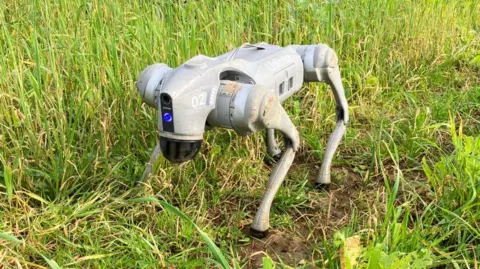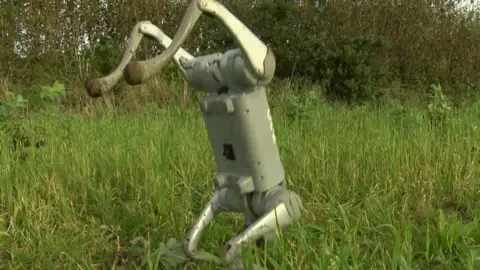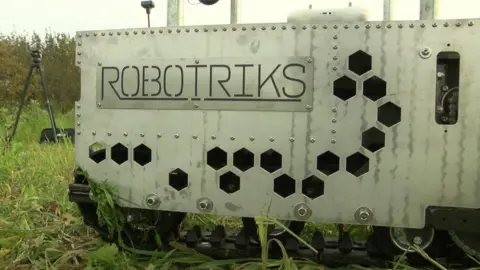Robot dog could sniff out profits for farmers
 Soil Association
Soil AssociationScientists hope robot dogs can help farmers assess the health of their soil more quickly as a technology trial is carried out in Cornwall.
Gamma ray detectors on equipment developed by a Cornish company are being used to assess soil quality.
Farmer Malcolm Barrett, from St Tudy, near Bodmin, is working with scientists from the University of Plymouth who are using gamma ray detectors mounted on robotic dogs to map the health of the soil in his fields picture.
He said he hopes the technology, which is better and faster than traditional analysis, will allow farms to be more profitable with fewer artificial additives being discovered.

The robot dog was built by former Plymouth University student Jake Shaw-Sutton, co-director of Pasley-based robotics company Robotriks.
“Our latest trials are looking at and focusing on changes in soil because it’s often not fully considered and affects everything around it,” he said.
He added that robot dogs could also be used to inspect hard-to-reach places, such as hills and hedges.
Mr Shaw-Sutton said: “His top speed was 5m (16ft) per second, which was a little faster than me and he weighed about 15kg (33lb).
“The key advantage is because of his legs being able to climb up very difficult terrain and very difficult surfaces.”

The robot dog’s £25,000 gamma detector measures naturally occurring radiation levels in the soil.
Other more traditional-looking tank-like tracked robots are also involved in the effort.
Mr Barrett said: “Usually I use a trowel to dig out the soil from five areas of the field.
“Then I have to send it to the lab and wait for the results.”
Will Black, trial leader at the University of Plymouth, said: “The ultimate goal is to provide a map of soil properties that is relevant to farmers and their decisions.
“The problem with traditional soil assessments is that they are very time-consuming and expensive.
“Typically, farmers can only take a few samples from any one field, and then you have to wait days or weeks to get the data.”



